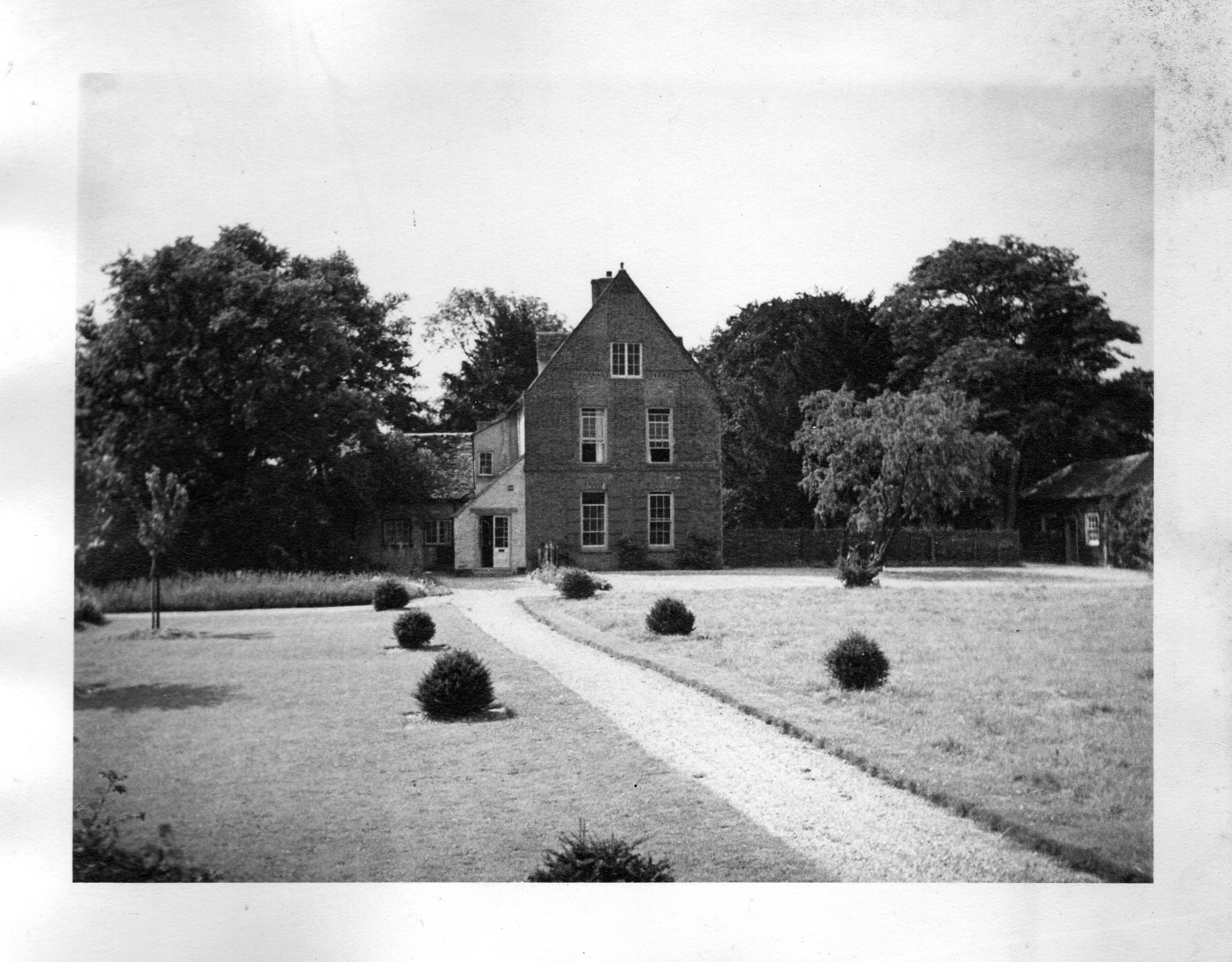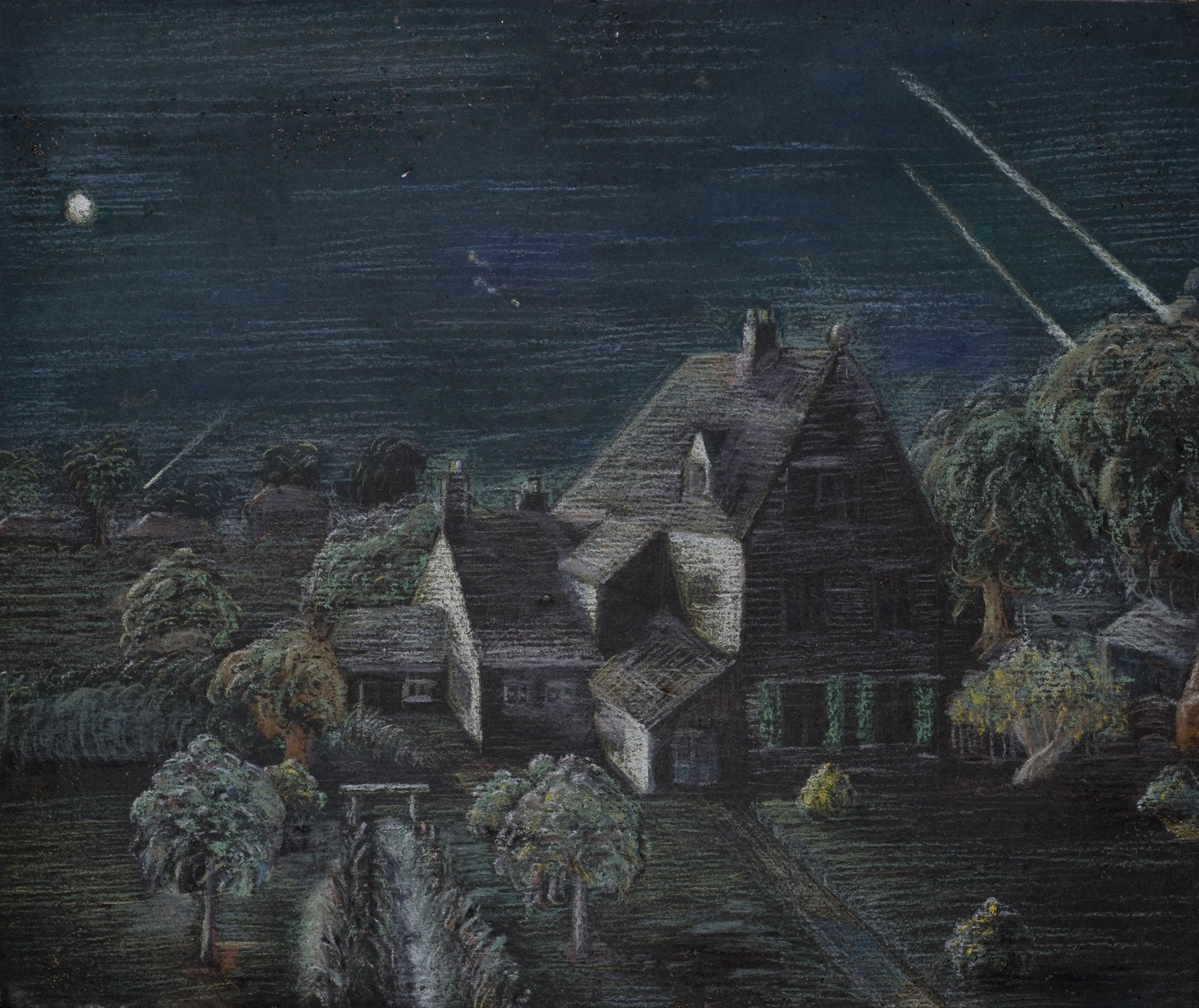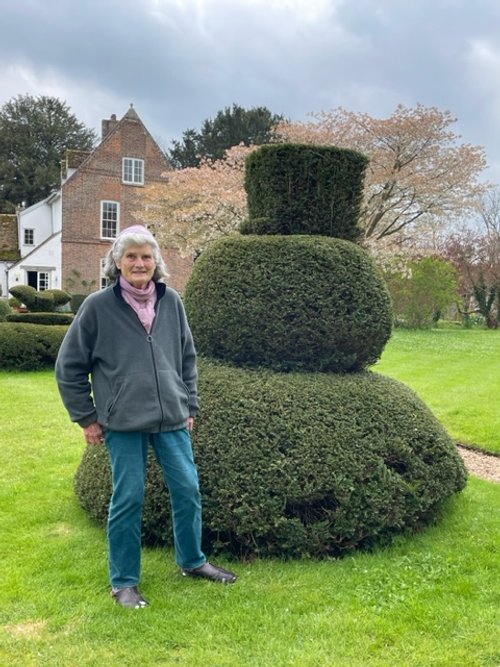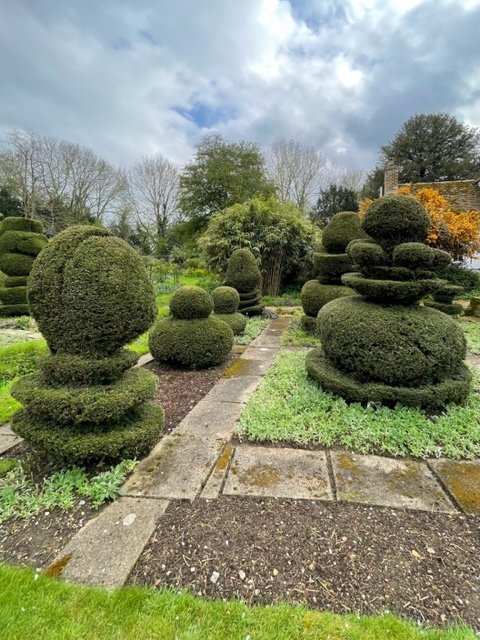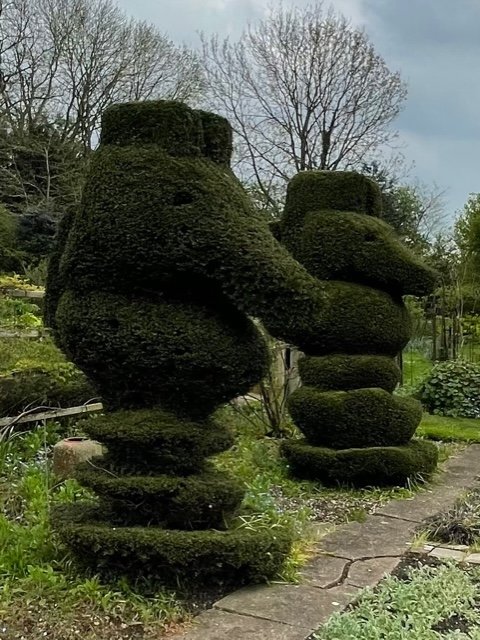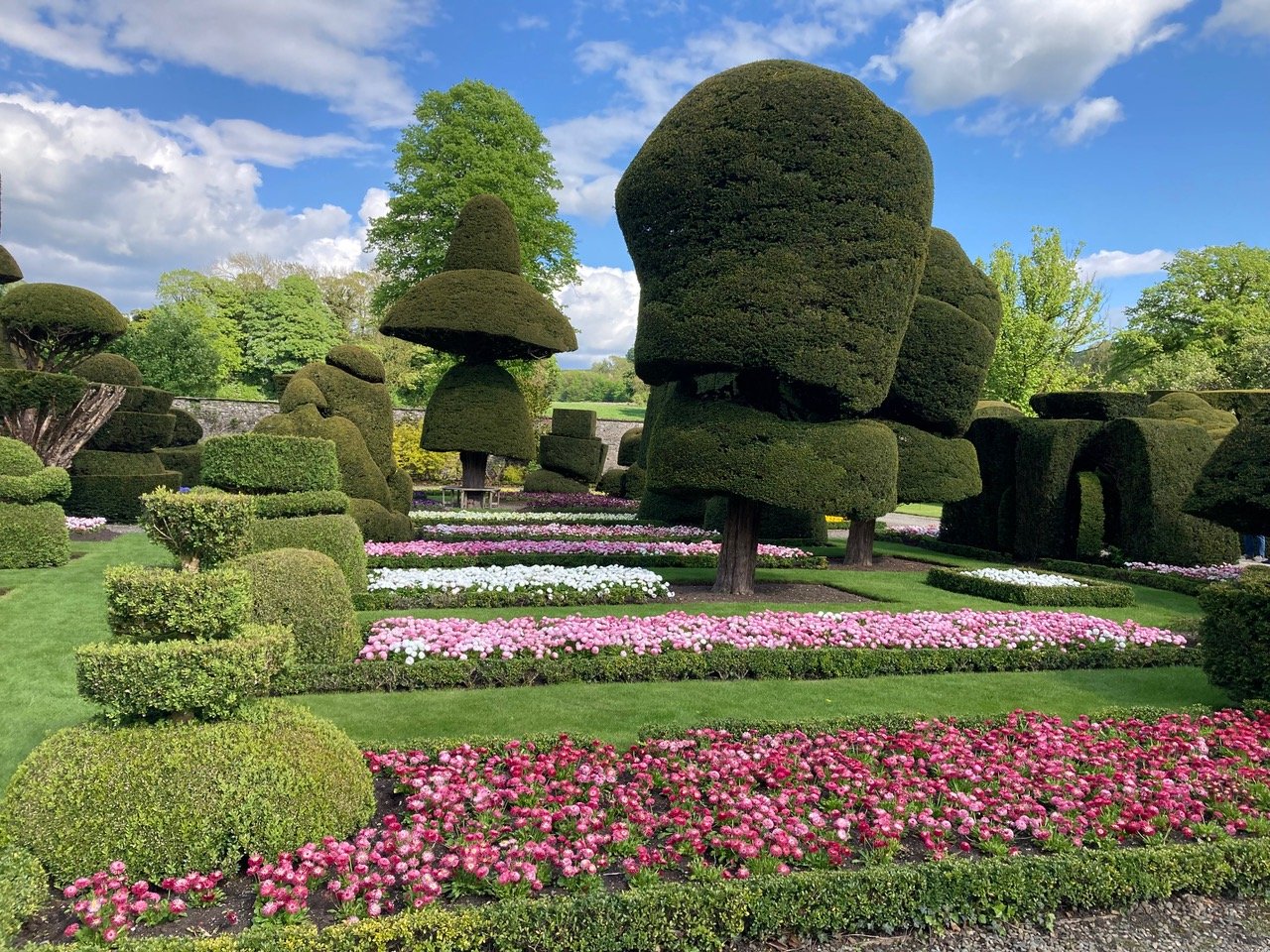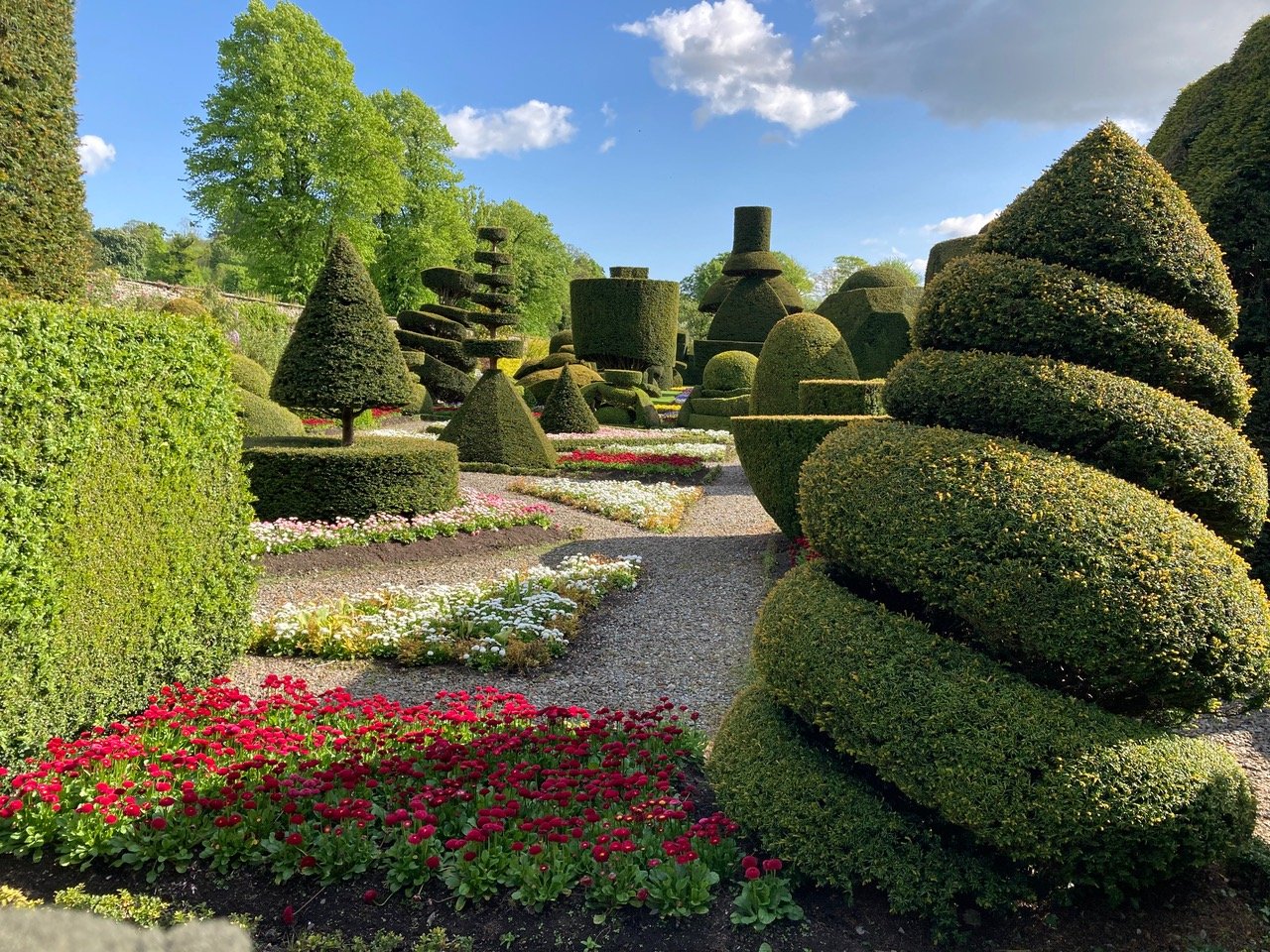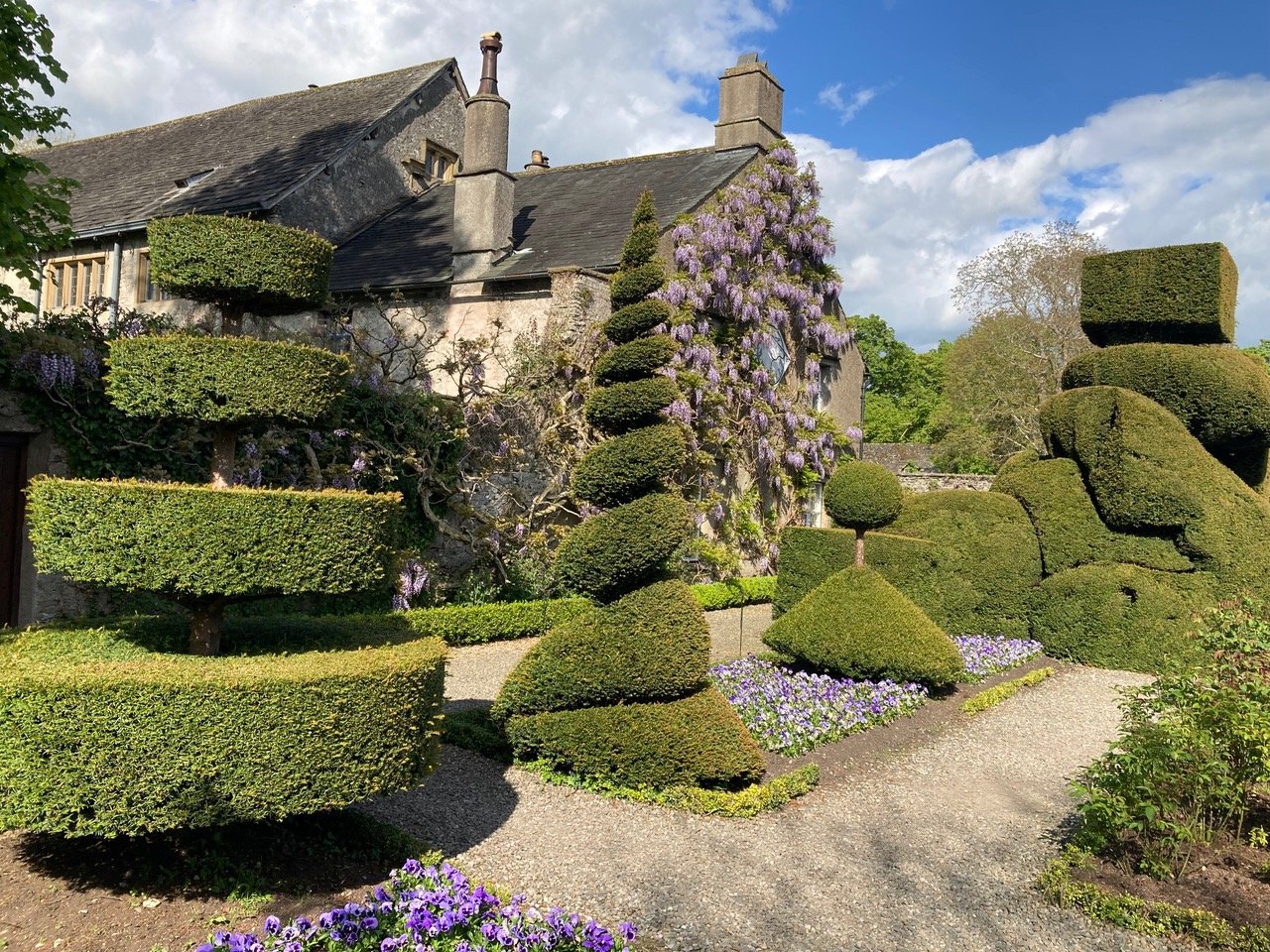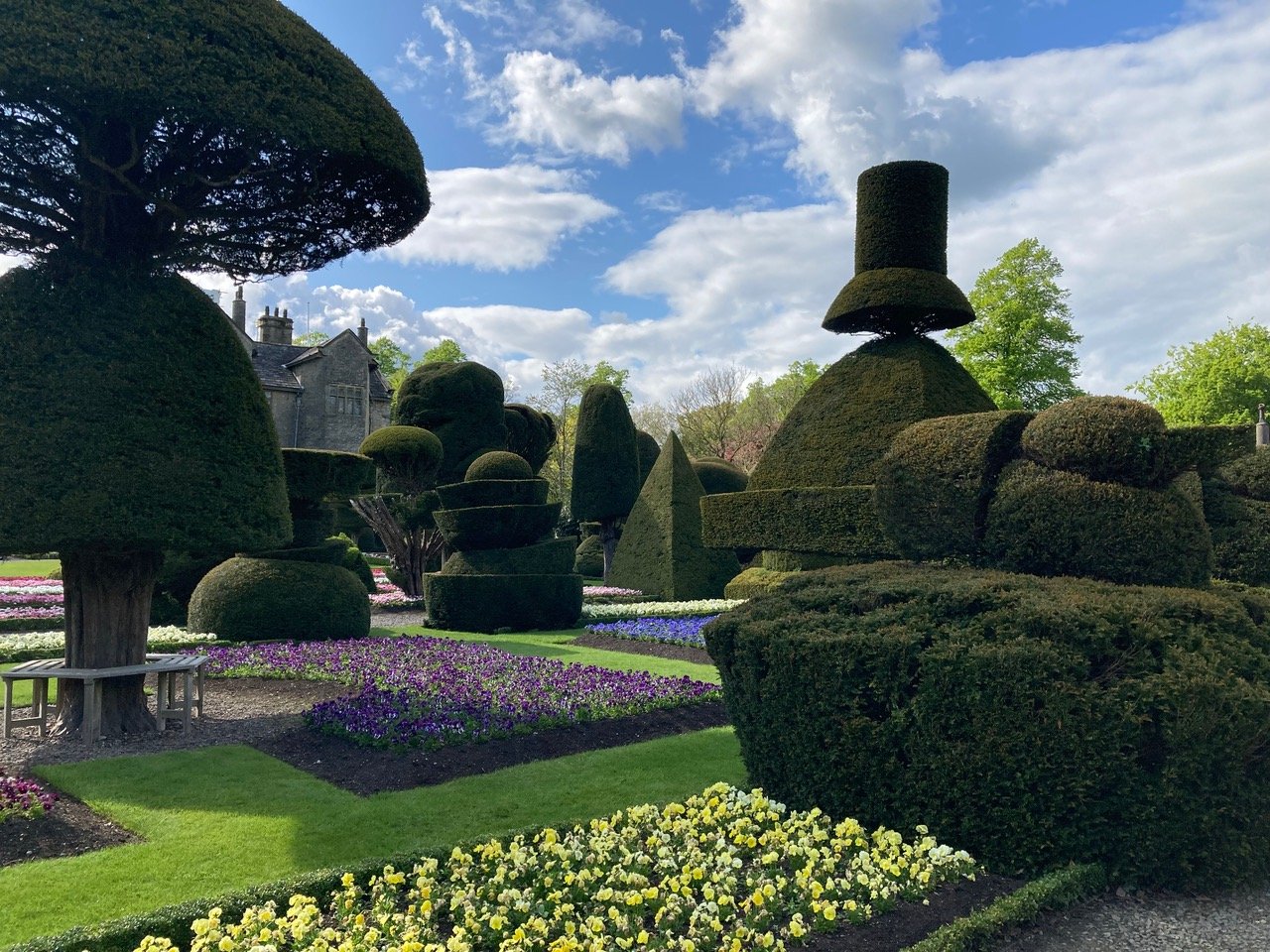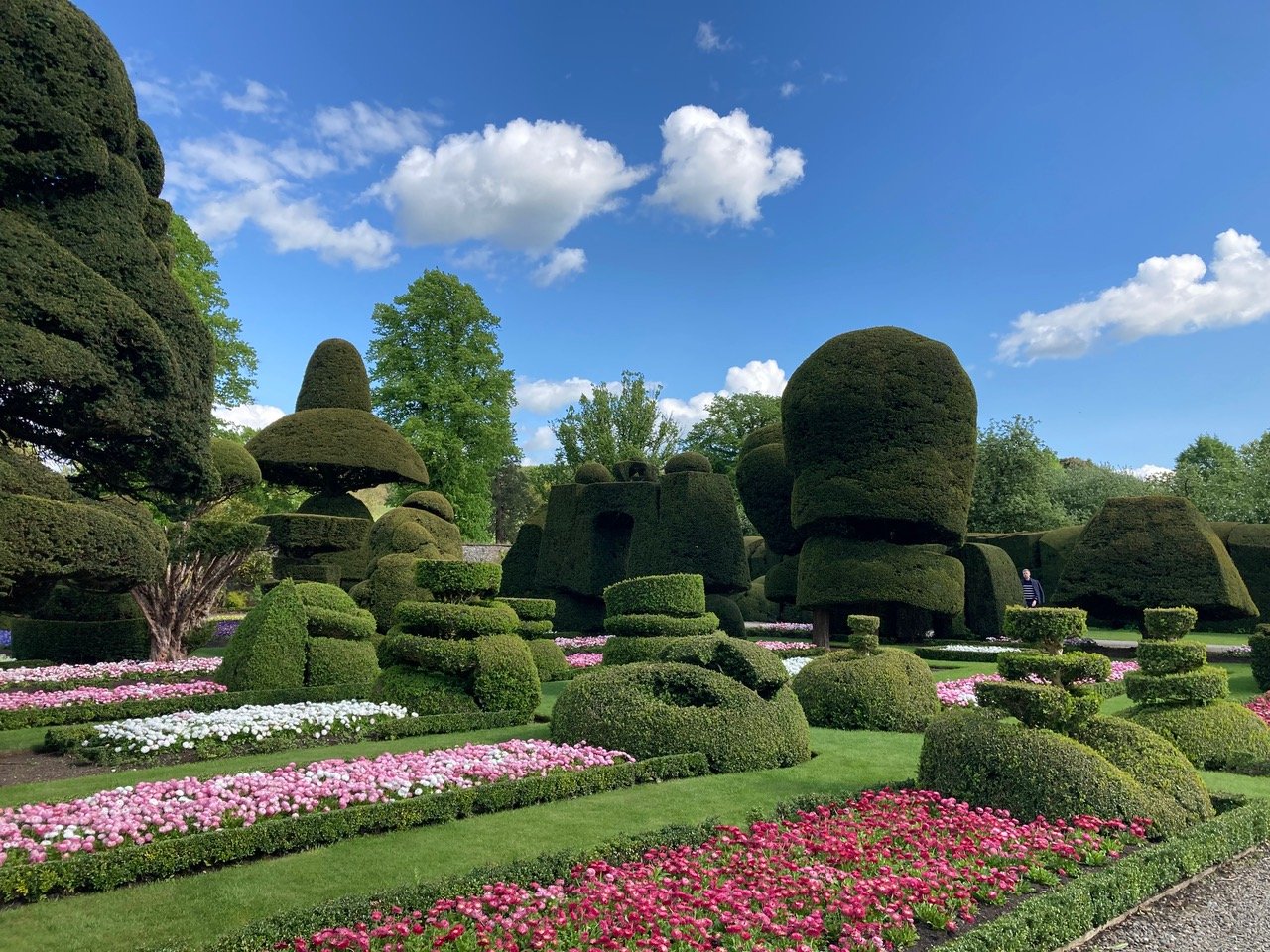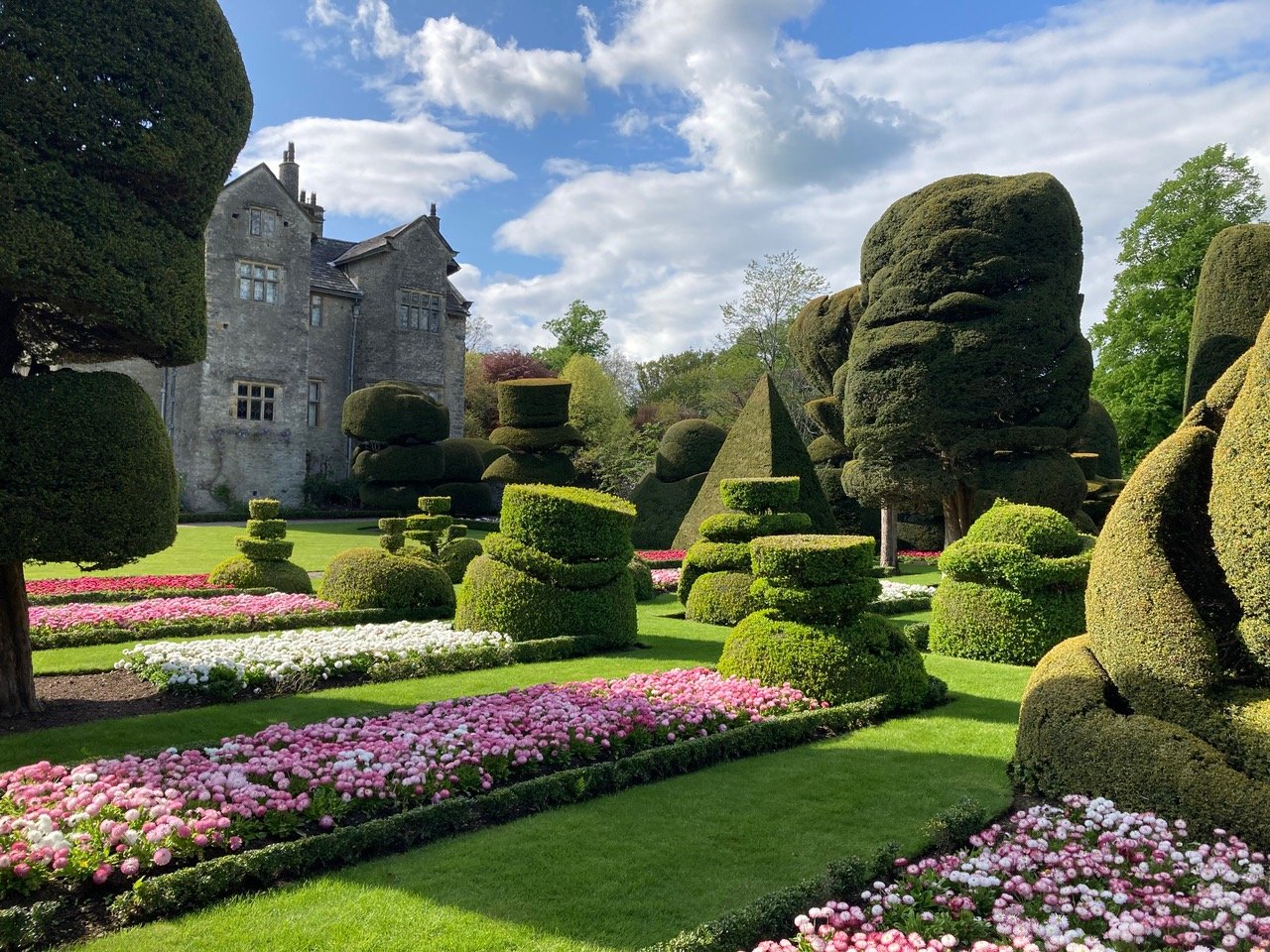Episode 8 Topiary
If you enjoy this episode and want to share it with your friends so they can follow and receive the weekly email and podcast just send them this link and they’ll be able to sign up at the top of the page.
Lucy Boston’s crowns and orbs 1958
Diana Boston lives at The Manor in Hemingford Grey and you can read about Lucy Boston here. The house and gardens inspired her books: The Children of Green Knowe. The garden is open daily but tours of the house are by appointment only.
The first picture is from 1943 when the Yew bushes are still very small. The next image, a pastel drawing with searchlights must have been done towards the end of the war and the topiary pieces are now cones before they are turned into the coronation pieces. Diana with the ‘Coronation women’ as she describes them now.
The pieces from the chess set!
Chris Crowder is the Head Gardener at Levens Hall in Cumbria, looking after some incredible pieces of topiary - some of them are 300 years old.
Chris went out into the garden after our chat and took these wonderful pictures.
How to start a piece of topiary - Chris Crowder Head Gardener at Levens Hall
I would suggest that you start small, that's what we both discussed. Don't spend a lot of money and buy somebody else's piece of topiary buy a small Yew bush and get going with that. So when I say small, like 30 centimeters, 50 centimeters, a little hedging plant, anything, a little yew tree in a pot, probably yew rather than Box currently because Box has problems. So Yew grows very well as topiary. It's naturally a plant that grows in the shade of woodland. So it's got little evergreen leaves. It's the perfect English topiary plant. What we normally do is plant them, you're only going to plant it once, so make sure the soil is good, or if it's not good, make sure you've put some good compost in there. So we plant them and we leave them for a year.
And the first year is just the roots growing. They get established. They like the spot. The second year, we'll go at that little topiary plant with some secateurs. And usually we have to cut about a third, half of it away, because what we're looking for is one central leader. So if we've got one piece of topiary, we don't want a lot of new bushes in there. We just want one plant.
And then we cut, after a year, we cut it to one central leader because we want one trunk, like a tree trunk, in the middle to support whatever shape we choose for it, if that's the sort of direction we're going. And then after that, we generally clip them as a cone. So they get bigger and bigger over a few years. Each year we'll clip it as a cone, but let it go bigger. And we're watching to keep that single leader, that single... chute coming out the top because that on which everything will hang later.
And then when we've had it a year or two, we've got a nice cone growing, that's when we can go at it with a bit of inspiration. And after a few years, of course, you'll have had time for inspiration to land. That cone can stay at the bottom, you can carry on growing up, we can add tiers, circles, we can make the cone into a cube or a drum shape, we can clean off bits of the trunk, we can generally work from that start into whatever takes our fancy for the next few decades, I suppose. So it's a piece of work in progress at that stage. But that's how I'd start.
How and where do you plant your Yew tree so it will be happy?
Yew trees don't like a lot of water, sogginess at the roots, that's one of the things they don't like. Obviously they like enough water so they don't die, but generally if you plant them in a wet place they'll go orange and not like it at all. So not a wet place. Yews actually grow very well in the shade, but if you're going to make topiary out of it, it really wants sun all the way around it. It'll be creating shade of its own. It needs to be in a fairly open situation.
And then?
And then just have patience, basically. That's it. It's patience, that patience and continuity that's so lacking. The faster life becomes and the more people move about, the more difficult perhaps it is to be established long enough anywhere to feel a connection with, a sense of connection with a place. And then the idea that you can actually be there the next year to... look after this thing and grow it into the next thing. It's that thought that you're going to be somewhere the following year. And when I first started Leavens I didn't plant pieces of topiary, I was too busy rushing around doing the garden and all the rest of it. But after a while I felt that I was going to be here for a little while longer and I had the time years-wise to start something and finish it or work it on so somebody else takes it on after me. That continuity again. It's never finished.
Could you plant it in a pot?
Chris says you could start it off in a pot for the first 3-5 years but then it will need too big a pot to be able to move it.
Can you plant it in your garden and still take it if you move? (Remember Andy’s mum and the Peasgood’s nonsuch apple tree in her car?)
Chris says you’ve got up to about 10 years. You will need a lot of friends to come around and help you dig out as much of the rootball as possible but you can move them. People buy established topiary.
After that…well the tree is no longer part of your story, it is part of the house’s story.

